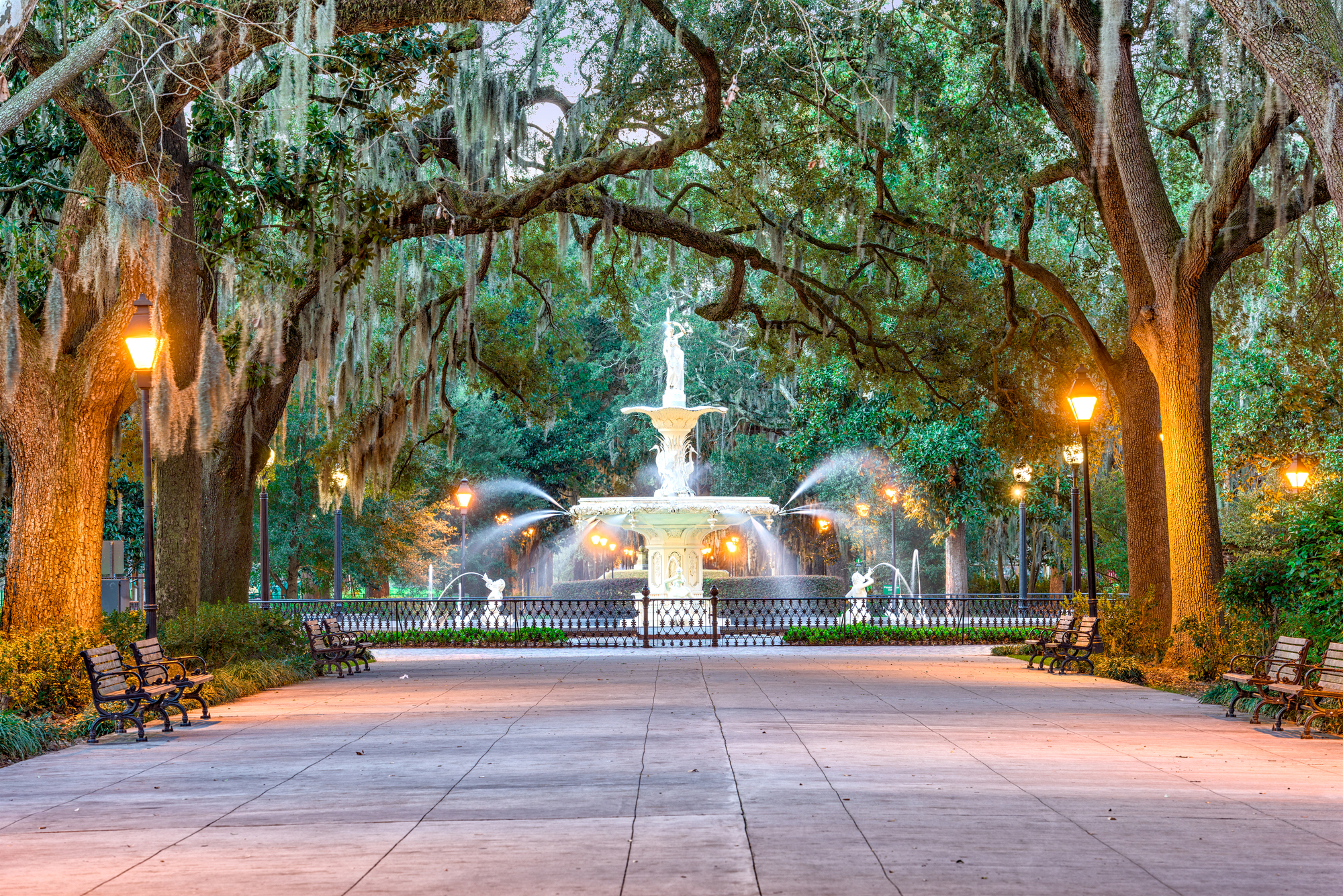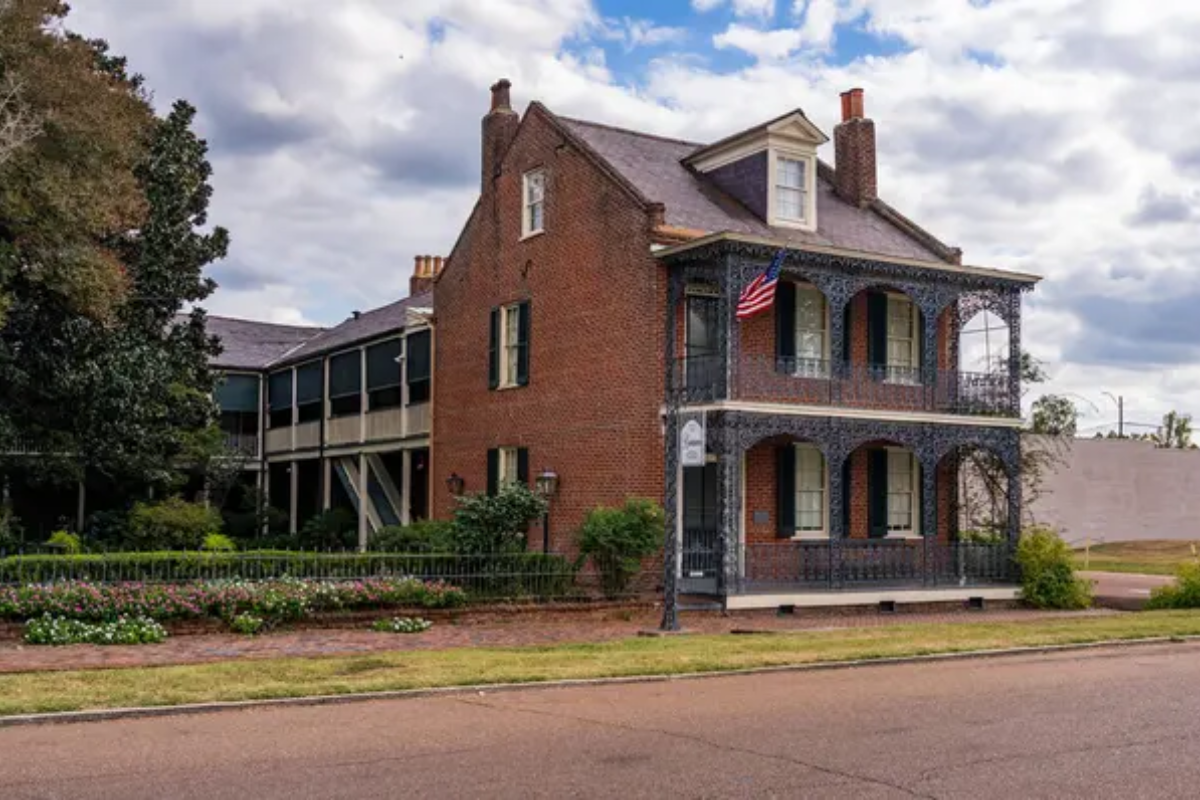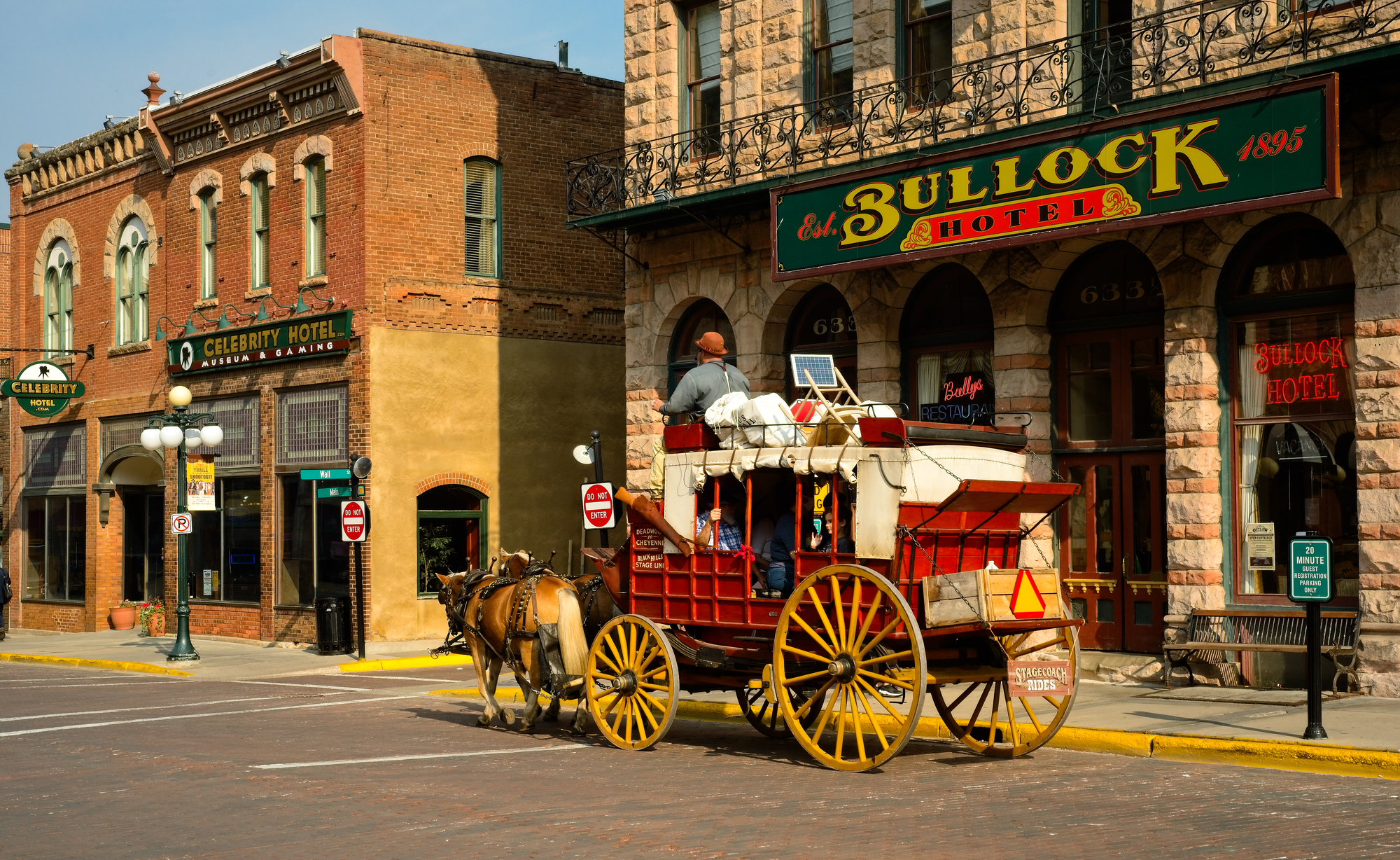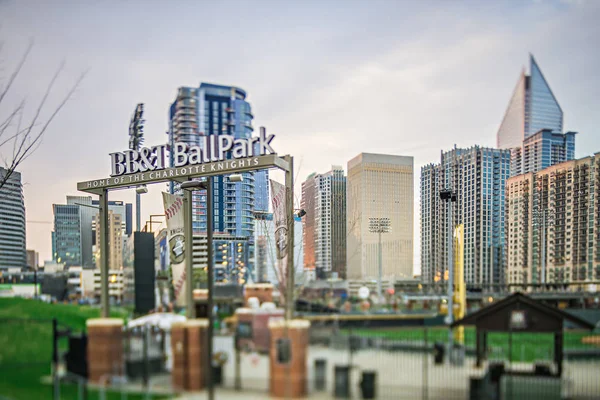America’s urban landscape features numerous cities that developed distinctive cultural identities through unique historical circumstances. While places like New York, Los Angeles, and Chicago dominate popular perceptions of American urban life, smaller cities throughout the country maintain compelling cultural narratives that differentiate them from larger metropolitan centers.
Here is a list of 14 American cities where distinctive heritage combines with contemporary life to create urban experiences reflecting specific regional histories, ethnic influences, and economic backgrounds not found elsewhere.
Santa Fe

America’s oldest state capital showcases architectural styles unlike any other US city through strict building codes, maintaining an adobe aesthetic throughout its historic core. The city’s unusual three cultures heritage is visibly expressed through Native American artwork under Spanish colonial porticos beside American territorial period government buildings.
The 400-year-old Plaza remains the cultural heart where indigenous artisans sell handcrafted jewelry directly on palace grounds following traditions established long before American nationhood. Contemporary Santa Fe balances historic preservation with significant art markets, generating over $1 billion annually.
Charleston

South Carolina’s coastal gem preserves America’s largest collection of pre-Revolution buildings through early preservation efforts starting in the 1920s. The city’s distinctive urban layout features narrow lots with homes turned sideways to capture cooling breezes through piazzas (side porches)— a design uniquely adapted to subtropical climate conditions.
Sweetgrass basket weavers continue West African traditions brought through the city’s massive slave trade, with contemporary artisans creating functional art that connects directly to Gullah Geechee’s cultural heritage. The city’s complex relationship with its slave-trading past creates an ongoing dialogue about historical interpretation and modern significance.
Like Travel Pug’s content? Follow us on MSN.
Savannah

Georgia’s first city maintains America’s largest National Historic Landmark District covering 2.5 square miles in a distinctive grid pattern organized around 22 public squares. The city’s infamous survival during Sherman’s destructive Civil War march resulted from direct presidential intervention in preserving architectural treasures that would otherwise have burned.
Low-country cuisine, blending African, European, and Caribbean influences, developed through unique agricultural conditions surrounding the city, where rice cultivation shaped cultural development. Contemporary Savannah balances a significant tourism economy with working port functions established when the city served as colonial Georgia’s commercial gateway.
Taos

This northern New Mexico settlement combines three distinct communities: the thousand-year-old Taos Pueblo, the Spanish colonial village, and an early 20th-century artist colony. The town’s distinctive stepped adobe architecture developed organically from available materials while adapting to harsh mountain conditions at 7,000 feet elevation.
Traditional acequia water management systems continue operating under governance structures established during the Spanish colonial period, determining agricultural patterns visible in surrounding landscapes. The community’s unusual concentration of working artists began when tuberculosis patients seeking healing in the mountain air included painters and writers who established creative traditions that continue today.
St. Augustine

Florida’s oldest European settlement maintains a distinctive Spanish colonial character through preserved structures dating to the 1700s within America’s oldest continuously occupied European city. The town’s unusual coquina stone construction resulted from practical adaptation to available materials, creating buildings resilient enough to survive centuries of hurricanes and sieges.
Cultural traditions reflecting Spanish, Minorcan, Greek, and African influences blend in local cuisine featuring datil pepper preparations found nowhere else in America. The city’s early tourism development through Henry Flagler’s railroad expansion preserved historic elements that might otherwise have vanished during Florida’s rapid 20th-century development.
Like Travel Pug’s content? Follow us on MSN.
New Orleans

Louisiana’s cultural treasure developed America’s most distinctive urban culture through a unique colonial history combining French, Spanish, Caribbean, and African influences, unlike any other American city. The city’s unusual legal background under Napoleonic rather than English common law created substantially different property and inheritance patterns visible in urban development.
Culinary traditions developed through unique circumstances where European cooking techniques were applied to African ingredients and Caribbean preservation methods created entirely new cuisines. Music traditions evolved from funeral processions combined with Caribbean rhythms, European instruments, and blues structures, creating jazz foundations that revolutionized global musical development.
Ste. Genevieve

Missouri’s oldest European settlement preserves French colonial vertical log architecture found nowhere else in North America outside this small Mississippi River community. The town’s unusual concentration of poteaux-en-terre (post-in-ground) and poteaux-sur-sol (post-on-sill) construction techniques represents architectural approaches imported directly from medieval France and adapted to frontier conditions.
Annual celebrations maintain French heritage through traditional foods, music and customs preserved despite two centuries under American governance. The community’s distinctive agricultural heritage reflects French colonial land distribution methods, creating narrow farm plots extending back from river frontage visible in contemporary field patterns.
Bethlehem

Pennsylvania’s former steel manufacturing center successfully transformed industrial heritage into cultural tourism while preserving physical evidence of America’s manufacturing dominance. The city’s Moravian settlement heritage remains visible in distinctive German-influenced colonial architecture predating the Revolutionary War across neighborhoods separate from later industrial development.
Former Bethlehem Steel facilities now house cultural venues, including America’s largest indoor art event space, where blast furnaces form dramatic backdrops for performances. Christmas celebrations connect directly to the city’s religious namesake, with traditional German-American customs drawing visitors to one of America’s most authentic holiday markets outside Germanic immigrant enclaves.
Like Travel Pug’s content? Follow us on MSN.
Butte

Montana’s copper mining capital retains America’s largest National Historic Landmark District with over 6,000 contributing properties reflecting mining heritage across dramatically steep hillsides. The city’s remarkably intact early 20th-century urban landscape resulted from economic decline freezing development rather than intentional preservation efforts.
Distinct ethnic neighborhoods maintain cultural traditions established when immigrants from Cornwall, Ireland, Finland, Serbia, China and Italy created communities around mining operations. The Berkeley Pit—a former open-pit mine now filled with highly acidic water—serves as a dramatic reminder of environmental consequences from earlier industrial practices, while drawing tourists to view this unintentional man-made disaster.
Natchitoches

Louisiana’s oldest settlement outside New Orleans preserves distinctive Creole architecture along a picturesque riverfront that served as the primary transportation corridor before the Mississippi River changed course. The community’s unique cultural blend resulted from the French colonial establishment, the Spanish governance period, and a significant free people of color population, creating social structures unlike those elsewhere in the American South.
Meat pie culinary traditions specific to this region developed through unusual cultural combinations not replicated elsewhere. The city maintains a traditional Christmas lighting festival dating to 1927, drawing visitors to celebrations along brick streets reflecting design patterns established during early French settlement.
Galena

Illinois’ time-capsule city preserves 85% of its buildings within a National Register district after economic decline froze development when the lead mining industry collapsed, and railroads bypassed this previously bustling river port. The town’s distinctive hillside construction creates unusual urban vistas showcasing brick and limestone buildings climbing steep terrain above the Galena River.
Remarkably intact commercial architecture houses businesses in storefronts virtually unchanged since Ulysses Grant lived here before the Civil War launched his military career. Contemporary Galena balances heritage tourism with authentic community functions, while avoiding the artificial feeling that affects many preserved towns.
Like Travel Pug’s content? Follow us on MSN.
Natchez

Mississippi’s antebellum showcase contains the South’s largest collection of pre-Civil War mansions, resulting from unique economic circumstances where wealthy cotton planters built town residences safe from river flooding and disease-affected plantation locations. The city’s unusual preservation resulted partly from the Civil War surrender without resistance, sparing structures from the destruction that devastated many Southern cities.
Distinct African American heritage remains visible through sites associated with the nation’s second-largest slave market, contrasting dramatically with opulent mansions built from cotton wealth. Contemporary Natchez navigates complex heritage tourism, promoting architectural treasures while increasingly acknowledging the enslaved labor that made such grandeur possible.
Portsmouth

New Hampshire’s colonial port maintains New England’s most intact early waterfront despite four major fires that devastated similar districts in neighboring cities. The community’s distinctive architectural heritage spans four centuries, with the unusual preservation of working-class neighborhoods alongside merchant mansions.
Maritime trades, including barrel making, sail production, and rope manufacturing, continue operating in historic structures through adaptive reuse, supporting both tourism and authentic craft production. Annual Strawberry Banke living history presentations demonstrate evolving American life through buildings relocated throughout the region to create comprehensive historical narratives spanning four centuries of continuous development.
Deadwood

South Dakota’s legendary gold rush town combines preserved Victorian architecture with gaming heritage uniquely maintained through special legislative authorization restoring gambling previously eliminated statewide. The entire community operates as a functioning National Historic Landmark where gambling revenue directly funds preservation projects maintaining authentic historical character.
Cemetery tours feature the graves of Wild Bill Hickok and Calamity Jane alongside ordinary citizens, creating a comprehensive understanding of frontier society beyond famous names. Contemporary Deadwood balances tourism demands with genuine efforts to maintain historical accuracy despite Hollywood dramatizations reshaping public perceptions of the town’s already colorful past.
Like Travel Pug’s content? Follow us on MSN.
Where America’s Past Remains Present

These distinctive American cities maintain physical connections to varied cultural heritages increasingly obscured elsewhere by homogenized development patterns. Their preservation resulted from combinations of economic circumstances, geographic isolation, deliberate conservation efforts, and sometimes simple good fortune sparing them from forces destroying similar communities.
The architectural and cultural landscapes they maintain provide irreplaceable windows into American development patterns shaped by regional influences, ethnic traditions, and economic factors creating distinctive urban environments unlike standardized contemporary development. Their continued existence offers authentic connections to American heritage increasingly difficult to experience elsewhere.
More from Travel Pug

- Cities Growing so Fast You Won’t Recognize Them in 10 Years
- 13 Destinations Where Tourists Regularly Regret Their Trip
- 16 U.S. Cities That Are Quietly Becoming Travel Hotspots
- Where to Travel If You Love Long Bus Rides and Daydreams
- 20 Cities Perfect for Solo Travelers Who Crave Adventure & Culture
Like Travel Pug’s content? Follow us on MSN.
